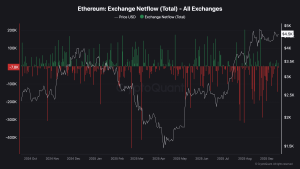
According to the latest report from Bitfinex, the decline in the price of Bitcoin below $43,000 can be partially attributed to reserve sales made by miners.
In particular, analysts argue that miners are selling off their reserves in order to maximize profits ahead of the upcoming decrease in mining rewards scheduled for April, coinciding with the halving event.
Let’s see below all the details.
Bitfinex: miners worsen the downward trend of Bitcoin price
As anticipated, the value of Bitcoin (BTC) has dropped below the $43,000 threshold, influenced by the bearish pressure from miners who are selling their reserves on the market.
The analysts at Bitfinex, in their report, have attributed a large part of the recent decrease in the price of Bitcoin, especially after the approval of Bitcoin spot ETFs by the SEC, to the sales made by miners.
These latter would have taken advantage of the surge in BTC prices as an opportunity to liquidate their positions.
The report highlighted that miners are selling off their reserves in anticipation of this year’s upcoming halving.
During which Bitcoin rewards will be reduced, resulting in a decrease in the profitability of their activities.
This sale provides miners with the necessary capital for infrastructure upgrades, while highlighting the significant influence they have on market liquidity and price determination.
According to the report, Bitcoin mining reserves have experienced a significant decrease shortly after the approval of Bitcoin spot ETFs. Specifically, the largest outflows from miner wallets ever recorded were registered last week.
The report also suggests that further sales may be imminent.
We remind you that Bitcoin’s halving is scheduled for April of this year, and it will result in a 50% reduction in the reward that miners receive for validating and adding new blocks to the blockchain.
This event, which occurs approximately every four years, is programmed in the Bitcoin protocol to control the supply of new Bitcoins, making it increasingly limited over time.
Currently, the world’s main cryptocurrency has recorded a decrease of over 1% in the last 24 hours, reaching around $42,920, as reported by the latest data.
The positive forecasts of some analysts on the price of Bitcoin
As mentioned above, currently consolidating around $43,000, BTC does not show a clear direction of movement. However, market analysts, including Markus Thielen from 10x Research, maintain a bullish attitude towards the future of Bitcoin in 2024.
Thielen predicts a further 65% increase compared to current levels, bringing the price of BTC to reach $70,000 by the end of the year.
In her report on Friday, Thielen highlighted several factors supporting this perspective.
According to Thielen, the macroeconomic context, favorable monetary factors, the US electoral cycle, and the growing demand from traditional investors (TradFi) investing in Bitcoin ETFs could contribute to a plausible rally towards $70,000.
Thielen has also emphasized the historical performance pattern of Bitcoin, highlighting that, despite positive returns in 10 out of the last 13 years, January returns have been more variable, with seven years up and six down.
Remembering his accuracy in past analysis, Thielen had predicted the almost doubling of the price of Bitcoin to $45,000 by the end of 2023.
Despite his prediction in January of the failure to obtain approval for spot ETFs, Thielen had correctly predicted a drop in prices in the mid-high range of $30,000 this January.
Thielen’s analysis is based on various factors, including the delay of the Federal Reserve in interest rate cuts, lower inflation rates, and sustained economic growth.
In addition, it draws attention to the historical correlation between US presidential election cycles and Bitcoin halving years, which, according to its analysis, have been historically bullish.
Cathie Wood: Bitcoin establishes itself as digital gold
Cathie Wood, CEO of ARK Invest, argues that Bitcoin (BTC) is increasingly taking on the role of gold as a store of value.
In a recent update on YouTube, Wood shared his vision, stating that the main cryptocurrency acts as a risk-free asset and a safe haven during periods of economic instability.
During last year’s regional banking crisis in March, Wood emphasized that Bitcoin grew by 40%, while the regional banking index (KRE) experienced a significant contraction.
Currently, with the regional banking index performing well after a brief correction following the introduction of 11 ETFs, Wood notes that Bitcoin is once again gaining popularity.
Presenting a chart comparing the price of Bitcoin with gold, Wood highlighted a strong and long-term bullish trend. The CEO suggests that this trend indicates a gradual shift from gold to Bitcoin as a valuable asset.





















